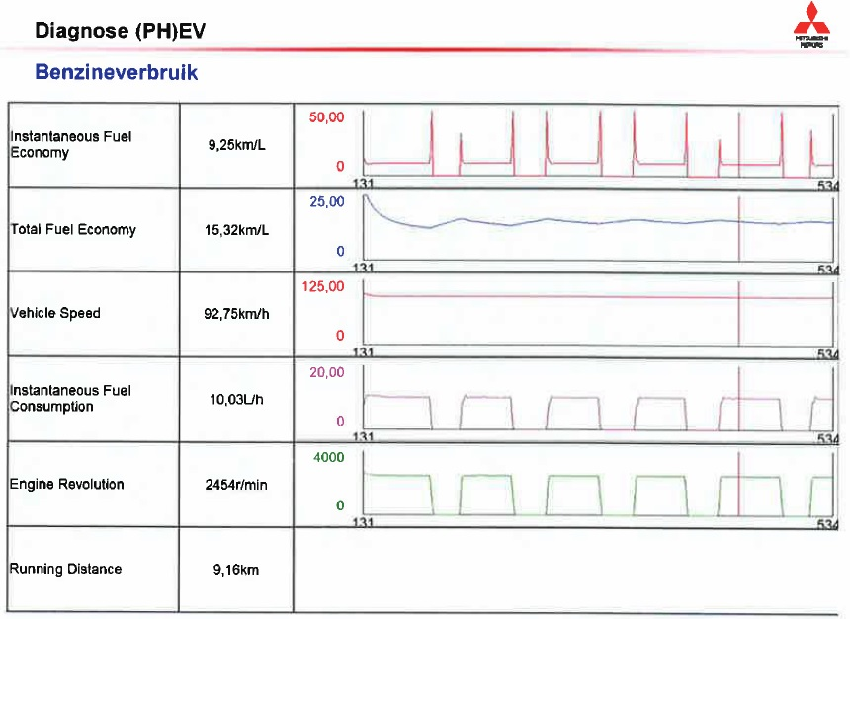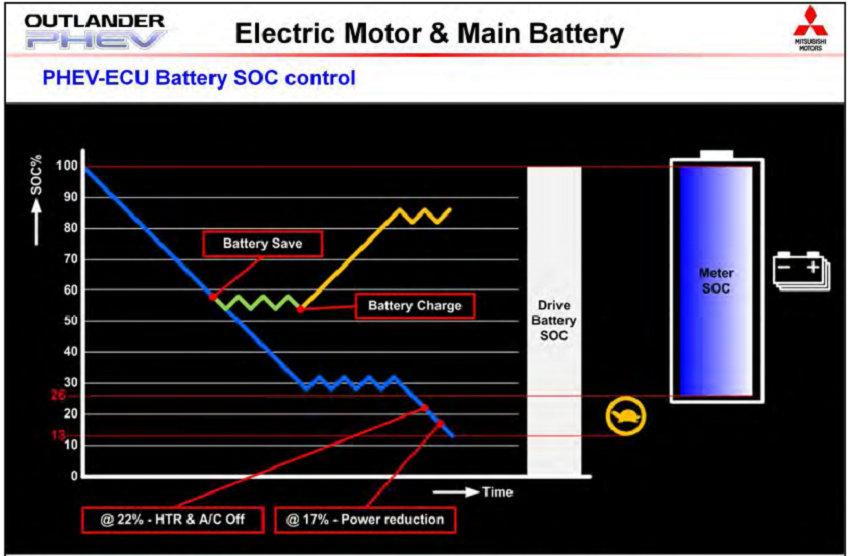Trex
Well-known member
I have noticed there is still some chatter about the charge button. Have seen statements like it will make your fuel consumption worse because it is adding extra conversion processes ie petrol to electricity into battery and battery to electric motors to turn the wheels etc etc.
Now I would, and have, normally discussed this sort of topic in the Technical sections but it is here in General that that I mostly notice this sort of discussion. I think some here may not visit over there or if they do never get involved in the discussions there for "fear" of showing their ignorance on the matter or lack of education in such details. If you feel that way I would suggest taking that first step and asking some questions over there in Technical if you want to learn more about this, I think, wonderful car. There are plenty of members here to help you. Remember we were all new or beginners once. I know I am still learning.
Now back to the topic of the charge button.
It may come as a surprise to some here that the charge button is nothing but something the PHEV is trying to do most of the time the petrol motor is running anyway ie charging up the drive battery. That's right, I will say it again, nearly every time the petrol motor runs the PHEV is trying to charge the battery if the load on it is light.
Now that in itself IMO is the hardest thing for us to get our heads around.Why would it try to do that? Sounds inefficient and wasteful of fuel. Charge the battery every time it runs IF it can. Sounds B/S. How does he know this?
I have just spent days reloading some old and new pretty pictures. Lets bring in some because I love pretty pictures and I hope you do too.

Please do not let this graph scare any of you. It is nothing but snapshot of time of a PHEV running along the road travelling at 92.75 kph (see Vehicle Speed row) in Parallel mode. If you do not know what parallel mode is or does please ask. No one worth their salt will jump down your throat IMO.
Now see Engine Revolution going from 2454 revs/min to zero and back up to 2454 revs/min and repeating. That is our PHEV petrol motor starting and stopping as we drive.
I still think it is amazing and I have owned 3 hybrid cars. I still own 2.
Again you can see the Instantaneous Fuel Consumption row. 10.03 Litres of fuel per hour every time the petrol motor runs and then a big fat 0 when it stops.
So what is happening here? It is nothing but Mitsubishi showing us that every time the petrol motor runs in the PHEV if the conditions are right it will CHARGE the drive battery so it can shut down the petrol motor later.
Now another pretty picture. After 2 days of working on them I want to show them off.

Again, do not let some graph frighten you. Ask those questions if you do not understand. There is no such thing as stupid question I think.
So see those squiggly or what are known as sawtooth (look like a saw) lines. Again it is nothing but Mitsubishi showing us the PHEV starting the petrol motor and charging up the Drive battery then stopping the petrol motor and going into EV mode if the conditions are right every time we drive in hybrid mode.
If it so inefficient pushing that charge button as I have seen some claim here why is Mitsubishi and Toyota with prius etc doing exactly that with their programming of the petrol motor when the conditions are right.
It is because that petrol motor is so inefficient in the first place. Especially under light load conditions eg cruising along at 100kph or 60mph along a flat road and NOT pulling a trailer etc.
A petrol motor is actually at its most efficient when that throttle plate that controls the air to allow for combustion of the fuel is fully open and at certain higher load on the motor. For instance a petrol motor is very inefficient at idle if it was running at the traffic lights when stopped. Unless it was charging a drive battery and even then I would not recommend that. That's another story.
So what does Mitsubishi and Toyota do if the petrol motor needs to run to keep us going and we are just cruising along with a light load on the petrol motor. That right, they increase the load on the petrol motor by generating electricity to be stored in drive battery and after awhile they shut down that bloody inefficient petrol motor and we cruise along in EV mode.
Now that charge button. All it does is keep the petrol motor going longer and charging up the drive battery for longer than Mitsubishi normally plans. At exactly the same rate as the PHEV normally charges. That is good for building up a charge to climb mountains etc but is also good for avoiding series mode when we come to towns and cities IMO.
But that is another story.
I had better finish here before the moderators chuck me out for putting this in the general section.
I hope it helps and I know I have explained this before over in Technical but just trying to stop what I think are wrong or misleading statements made by some members here.
Regards Trex.
Ps If anyone can help me explain it better please do. I am not a teacher as such. Just a lowly engineer that loves pretty pictures.
Now I would, and have, normally discussed this sort of topic in the Technical sections but it is here in General that that I mostly notice this sort of discussion. I think some here may not visit over there or if they do never get involved in the discussions there for "fear" of showing their ignorance on the matter or lack of education in such details. If you feel that way I would suggest taking that first step and asking some questions over there in Technical if you want to learn more about this, I think, wonderful car. There are plenty of members here to help you. Remember we were all new or beginners once. I know I am still learning.
Now back to the topic of the charge button.
It may come as a surprise to some here that the charge button is nothing but something the PHEV is trying to do most of the time the petrol motor is running anyway ie charging up the drive battery. That's right, I will say it again, nearly every time the petrol motor runs the PHEV is trying to charge the battery if the load on it is light.
Now that in itself IMO is the hardest thing for us to get our heads around.Why would it try to do that? Sounds inefficient and wasteful of fuel. Charge the battery every time it runs IF it can. Sounds B/S. How does he know this?
I have just spent days reloading some old and new pretty pictures. Lets bring in some because I love pretty pictures and I hope you do too.

Please do not let this graph scare any of you. It is nothing but snapshot of time of a PHEV running along the road travelling at 92.75 kph (see Vehicle Speed row) in Parallel mode. If you do not know what parallel mode is or does please ask. No one worth their salt will jump down your throat IMO.
Now see Engine Revolution going from 2454 revs/min to zero and back up to 2454 revs/min and repeating. That is our PHEV petrol motor starting and stopping as we drive.
I still think it is amazing and I have owned 3 hybrid cars. I still own 2.
Again you can see the Instantaneous Fuel Consumption row. 10.03 Litres of fuel per hour every time the petrol motor runs and then a big fat 0 when it stops.
So what is happening here? It is nothing but Mitsubishi showing us that every time the petrol motor runs in the PHEV if the conditions are right it will CHARGE the drive battery so it can shut down the petrol motor later.
Now another pretty picture. After 2 days of working on them I want to show them off.

Again, do not let some graph frighten you. Ask those questions if you do not understand. There is no such thing as stupid question I think.
So see those squiggly or what are known as sawtooth (look like a saw) lines. Again it is nothing but Mitsubishi showing us the PHEV starting the petrol motor and charging up the Drive battery then stopping the petrol motor and going into EV mode if the conditions are right every time we drive in hybrid mode.
If it so inefficient pushing that charge button as I have seen some claim here why is Mitsubishi and Toyota with prius etc doing exactly that with their programming of the petrol motor when the conditions are right.
It is because that petrol motor is so inefficient in the first place. Especially under light load conditions eg cruising along at 100kph or 60mph along a flat road and NOT pulling a trailer etc.
A petrol motor is actually at its most efficient when that throttle plate that controls the air to allow for combustion of the fuel is fully open and at certain higher load on the motor. For instance a petrol motor is very inefficient at idle if it was running at the traffic lights when stopped. Unless it was charging a drive battery and even then I would not recommend that. That's another story.
So what does Mitsubishi and Toyota do if the petrol motor needs to run to keep us going and we are just cruising along with a light load on the petrol motor. That right, they increase the load on the petrol motor by generating electricity to be stored in drive battery and after awhile they shut down that bloody inefficient petrol motor and we cruise along in EV mode.
Now that charge button. All it does is keep the petrol motor going longer and charging up the drive battery for longer than Mitsubishi normally plans. At exactly the same rate as the PHEV normally charges. That is good for building up a charge to climb mountains etc but is also good for avoiding series mode when we come to towns and cities IMO.
But that is another story.
I had better finish here before the moderators chuck me out for putting this in the general section.
I hope it helps and I know I have explained this before over in Technical but just trying to stop what I think are wrong or misleading statements made by some members here.
Regards Trex.
Ps If anyone can help me explain it better please do. I am not a teacher as such. Just a lowly engineer that loves pretty pictures.
